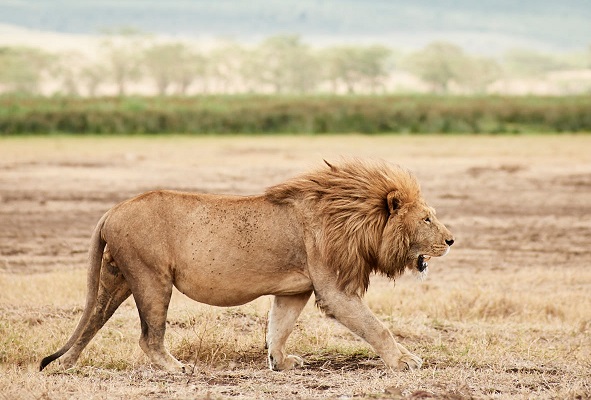- Rising demands for lion parts in Southeast Asia has fueled poaching in Africa.
- The encroachment of livestock keepers on wildlife conservation parks have so far caused conflicts between nomadic livestock keepers.
- This is leading to killings of lions by poisoning, shootings by spears, and poisoned arrows.
“High incidences of lion poisoning have also been reported in East Africa as nomadic communities retaliate after attacks on their livestock,” said Edith Kabesiime, Wildlife Campaigns Manager at World Animal Protection’s Africa office in Kenya.

She said that demand for lion products, like bones and teeth, in the fast-growing herbal medicine industry has also fueled their poaching in the African wild.
Kabesiime said that other threats to the African lion include captive breeding and trophy hunting, adding that enactment of new policies, regulations, and heightened campaigns are key to saving the carnivore and sustaining the resilience of the continent’s natural habitats.
The population of African lions is estimated to have declined by as much as 50% over the last 25 years. Conservation experts said there is a real threat to lion survival from loss of habitat, persecution from human conflict, and growing illegal trade in lion parts.
“Lions form a crucial part of our biodiversity and natural ecosystems, and this event will help not only to raise awareness for their plight but also to shine the spotlight on the many more successes that we need to scale up to ensure their future sustainability,” Kenyan Tourism Minister Mr. Najib Balala said.
Statistics from World Animal Protection indicate that Africa’s lion population is currently estimated at 20,000, down from about 200,000 lions a hundred years ago.
South Africa is the only nation to allow large-scale lion breeding, where the animals are often kept in packed cages or enclosures.
Killing lions for their bones and other parts has emerged as a more recent threat. Although lion bones are not part of traditional Chinese medicine, as tiger populations decline, these more readily available products are entering illegal wildlife markets as substitutes.
Lions are the most and leading tourist attractive animal, pulling big crowds of tourists on safari in East Africa.
WHAT TO TAKE AWAY FROM THIS ARTICLE:
- “Lions form a crucial part of our biodiversity and natural ecosystems, and this event will help not only to raise awareness for their plight but also to shine the spotlight on the many more successes that we need to scale up to ensure their future sustainability,”.
- Kabesiime said that other threats to the African lion include captive breeding and trophy hunting, adding that enactment of new policies, regulations, and heightened campaigns are key to saving the carnivore and sustaining the resilience of the continent’s natural habitats.
- Conservation experts said there is a real threat to lion survival from loss of habitat, persecution from human conflict, and growing illegal trade in lion parts.























